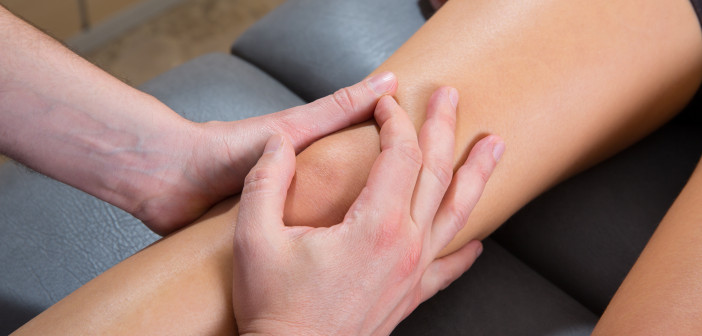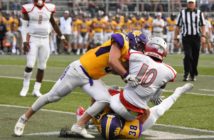When an injury happens playing sports, the obvious thing to do is let the injured limb rest. Other options are to wrap the area with a compression bandage, ice it or apply heat. Each type of injury comes with its own set of recommended approaches. These passive methods of healing are important, but physical therapy can be just as helpful. Physical therapy can help the injury heal faster, reduce pain without surgery, and even help the injury heal correctly. It may even help prevent injuries in the future.
According to Wikipedia, there are several phases that an injury goes through, and each one requires its own type of physical therapy. In the acute phase after an injury, very little movement is recommended. The subacute and chronic phases follow the acute phase, and more movement is tolerated by the injured limb during these phases. As soon as a physical therapist or doctor approves, a specific set of exercises can be started to help the body heal.
Physical therapy helps to heal by getting blood and lymph flowing through the injured area. Blood helps wounded tissues heal by bringing them oxygen, protein and other nutrients. Blood also helps heal by fighting possible infection in the damaged tissue. Lymph helps carry excess fluids away, and usually builds up in areas of the body that have been in one position for too long. Moving the injured area gently can help reduce edema and inflammation.
Injured areas of the body typically swell up, which can cause more pain. Swollen tissue pressing on an already injured body part can cause additional pain. The swelling presses on sensitive nerves in the area, which increases discomfort. The last thing a person might want to do is move a painful limb or joint, but in some cases that may be the best way to alleviate the pain. Under the guidance of a physical therapist, proper exercises can be performed to relieve the swelling that causes pain. Proper movements can also carry away waste materials, chemicals or bacteria that may have built up in the injured tissues. That can also help with pain relief.
Another way physical therapy can help is to make sure a person heals correctly, which according to Select Spine & Sports Medicine is something people often forget. If an injured person limps or holds his body in a stiff position due to pain, that can worsen the pain. It can also slow down healing, or cause secondary injuries in the compensating body parts. Physical therapy helps a person align her body properly, so it will heal correctly, and not cause problems with other joints or limbs. Proper movements also help maintain a range of motion in the injured area. Stiff muscles and joints are more likely to be re-injured, so keeping up a proper range of motion is important to healing.
Doing physical therapy to help heal an injury can also help prevent future injuries. It’s possible the injury was caused by improper alignment, inadequate warm-up or lack of muscle strength. Physical therapy can help with all of these things. Proper alignment and body mechanics while playing sports can help prevent injury, and a physical therapist can show you how to hold your body correctly. A therapist can also show you the proper exercises and stretches to do while warming up. If specific muscle weaknesses helped cause the injury, physical therapy can help you strengthen those areas to prevent injury in the future.
Even though rest and elevation may seem adequate to heal an injured limb or joint, physical therapy can greatly enhance the healing process. A physical therapist can help you find just the right exercises to relieve pain and speed healing. He can also give you the proper exercises to prevent further sprains, strains, fractures and dislocations. Learning the proper stretches and movements can help your body perform at its optimal level, and can both heal and prevent sports injuries.




